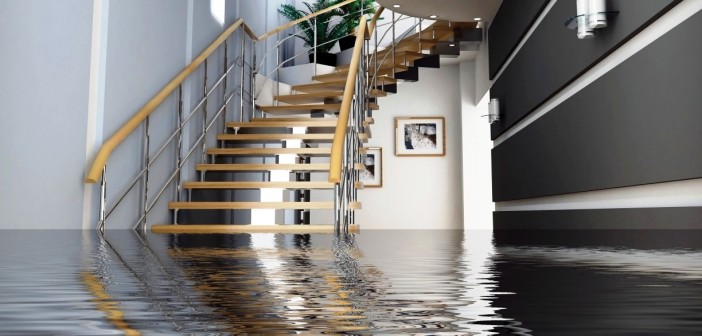There are few situations that will affect a homeowner’s property and their family as much as water damage. While a few puddles may seem insignificant in the grand scheme of things, standing water and ongoing leaks can lead to a wide range of issues that will bring a family’s daily life to an immediate halt. For those that have recently noticed water damage in their own home or are worried that it could take place soon, it is important to know exactly how this damage takes place, the impact it has on one’s property, and what can be done about it.
Most Likely Causes of Water Damage
A single slow drip coming from a faucet, pipe, hose, or nozzle can have serious repercussions over the course of a year. According to the USGS, a slow leak of just 1 drop per minute will result in over 100 gallons of lost water per year. These issues can take place for a wide variety of reasons, but they are more likely to happen in a home with older pipes. As time goes on, both contaminants in the water and external factors will take a toll on every component of the plumbing system ranging from the main sewer line and water heater to various appliances and gaskets. In areas with dramatic shifts in the weather, there is also a much higher chance of burst pipes during the warmest and coolest seasons of the year. Any time that remodeling or construction takes place the chance of a broken pipe and water damage goes up exponentially.
Understanding Water Categories
A somewhat high percentage of all homeowner’s insurance claims come from water damage, but not all of this damage will result in the same issues. In fact, most specialists have a number of categories and classes for water damage which will affect any payments that are made by the insurance providers, the extent of the damage, and how exactly repairs must be carried out. Category 1 water is considered to be relatively potable water such as a burst sink while category 2 water (grey water) is not safe to be ingested and may come from the toilet or shower. Category 3 water, also referred to as black water, is extremely dangerous and typically the result of polluted ground water or broken sewer lines.
How Damage is Classified
There are currently 4 classifications of water damage beginning with class 1 which has little or no permanent damage. Class 2 water damage has a fast evaporation rate, but porous materials such as cushions and some carpeting may need to be professionally cleaned. Class 3 damage typically refers to damaged walls or flooring, but the damage will not require full repairs or remodeling. Class 4 damage is unfortunately common and requires specialized treatments and services and will most likely result in a full removal of the affected items.
Structural Problems and Health Issues
The two primary concerns for water damage are how it will impact the home itself and the owner’s belongings as well as the health issues that will pop up. Water naturally tends to find its way to the lowest area, and this almost always means basements, garages, and the foundation of the building. Within a short period of time, water can create an exceptional amount of damage ranging from diminishing the structural integrity of the home to rot around load-bearing walls and posts.
For families that live in the home, any amount of water that is left standing or untreated will mean immediate health risks. We talked with Integrity Restoration & Remodeling who said, “Within a short period of time, water will create bacterium and spores that will quickly spread throughout the house creating unwanted smells as well as health risks. Standing water is also the ideal location for an infestation to take place.” Critters ranging from rats and squirrels to termites and cockroaches seek out this type of water within the home to create their nests and colonies.




